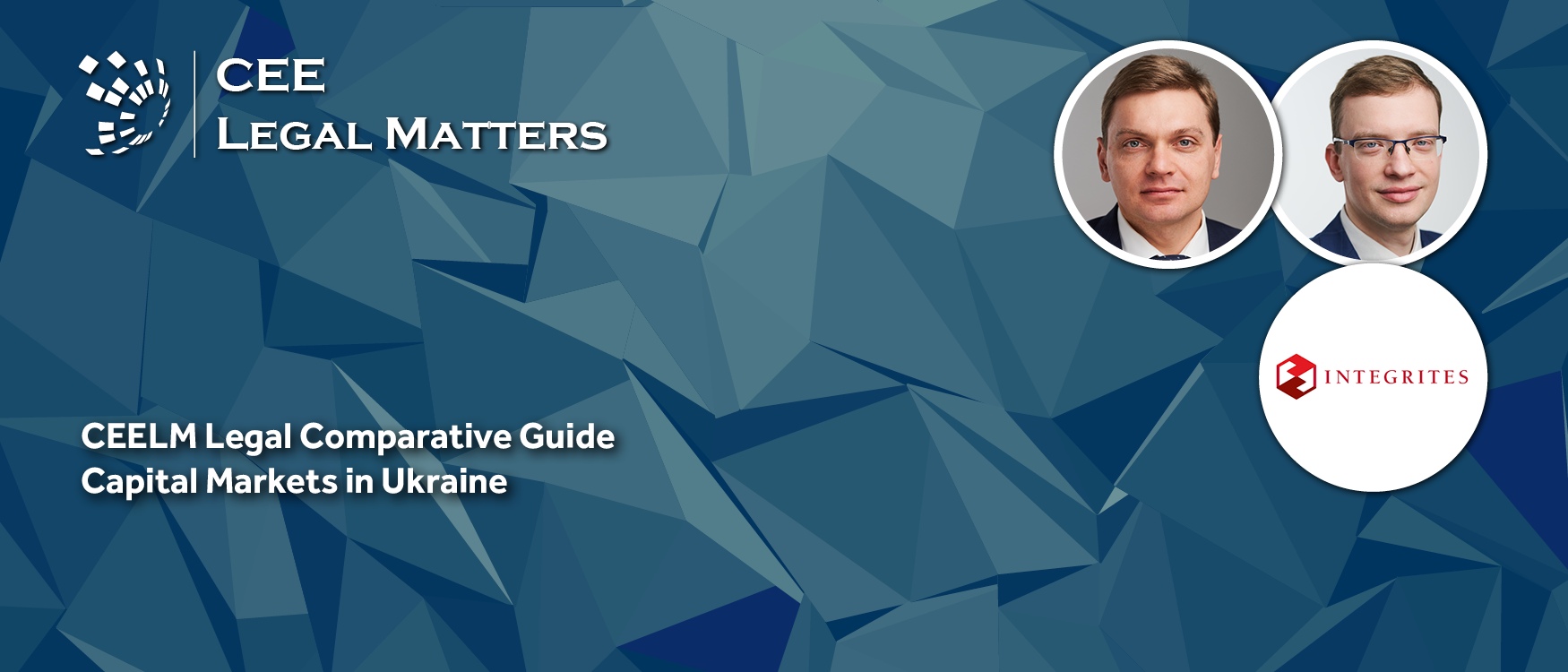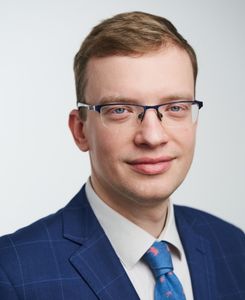Contributed by Integrites.
1. Market Overview
The Ukrainian capital market faced significant disruptions in the first half of 2022 due to strict restrictions imposed by the National Securities and Stock Market Commission of Ukraine (the NSSMC). From February 24 to August 8, 2022, the NSSMC suspended the placement, circulation, and redemption of all securities, resulting in a complete cessation of market activity during this period.
However, after lifting all the restrictions, allowing the resumption of normal market activity, towards the end of the year, on December 29, 2022, the national regulator made the decision to allow for the first time the circulation of securities included in the S&P 500 stock index on the territory of Ukraine.
Despite the disruption caused by the restrictions, there is optimism for a significant increase in market activity in the years following the post-war reconstruction.
It is worth noting that the largest volume of trading in financial instruments on organized capital market operators during the mentioned period was recorded with government bonds, amounting to UAH 152.83 billion (95.14% of the total volume of trading in financial instruments on organized capital market operators during January-December of the current year).
In addition, during January-December 2022, there was a consolidation of securities trading on two organized capital market operators, PERSPEKTYVA and PFTS (the First Stock Trading System), which accounted for 90.40% of the value of trading in financial instruments.
2. Overview of the local stock exchange and listing segments (markets)
As a point of general information, it is worth noting that in accordance with best international practices, in the summer of 2021, the option to trade relevant assets on multiple platforms was introduced. There are three different types of trading platforms available.
2.1. Regulated market
First, there is the regulated market, which is traditionally used by larger players. It is a system managed by a regulated market operator that allows third parties to purchase and sell financial instruments, such as derivative contracts, in accordance with non-discriminatory rules. The market is registered in accordance with the law and provides a range of conditions, including collecting and disseminating information regarding financial instruments available for trading, facilitating trades, and centrally performing and executing legal transactions.
2.2. Non-regulated market
Second, there is the multilateral trading facility (MTF), which is an alternative self-regulatory platform for smaller businesses. This platform is managed by an MTF operator and allows third parties to purchase and sell financial instruments, such as derivative contracts, based on non-discriminatory rules established by the NSSMC. The platform ensures the conclusion of corresponding agreements in accordance with the law.
Finally, there is the organized trading facility (OTF), which is a multilateral system that is not a regulated market or MTF. It is managed by an OTF operator and allows third parties to purchase and sell financial instruments, such as derivative contracts, based on the discretionary rules of the OTF operator. The platform ensures the conclusion of corresponding agreements.
2.3. Market operators
All market operators are required to obtain a license from the NSSMC. Moreover, foreign entities are entitled to submit documents and obtain such a license, which could potentially make the Ukrainian stock market open to competition.
Foreign legal entities that hold 10% or more of a Ukrainian legal entity’s statutory capital and plan to engage in professional activities in capital and commodity markets must submit specific documents to the NSSMC to obtain a license.
These documents include:
- a copy of the decision of the authorized body of the foreign legal entity;
- written permission to participate in Ukrainian markets (if required by the foreign entity’s home country);
- an extract confirming registration;
- and financial statements for the last three years (with audit reports, if available).
If foreign individuals hold 10% or more of the Ukrainian legal entity’s statutory capital and plan to engage in professional activities in capital and commodity markets, they need to submit the same documents, except for the written permission of the authorized supervisory authority.
3. Key Listing Requirements
Ukrainian law provides that the listed securities are the securities that are listed on the regulated market and were included in the stock register as corresponding to the listing requirements.
3.1. ECM
For shares to be listed on the regulated market, the issuer must meet the following requirements at a minimum:
- it has existed for at least three years;
- its minimum equity capital amounts to UAH 300 million (approximately EUR 7.75 million);
- its minimum annual net income from the sale of goods, works, and services for the last fiscal year amounts to UAH 300 million (approximately EUR 7.75 million) (excluding banks);
- its minimum market capitalization amounts to UAH 100 million (approximately EUR 2.6 million);
- the portion of its free float shares constitutes 10% of the share capital or is valued at UAH 75 million (approximately EUR 2 million);
- the number of its shareholders not less than 150;
- it has an officer who holds the position of a corporate secretary; and
- it conducts an annual audit under international auditing standards involving an independent external auditor for at least two years.
The regulated market may also create a distinct segment for non-listed shares of new companies, which may appeal to investors seeking to support medium-sized businesses in Ukraine. However, admission to this segment is contingent on the issuer meeting the following requirements:
- the issuer has existed for at least one year (or at least six months provided that all other requirements during the such period have been met);
- minimum market capitalization is UAH 20 million (approximately EUR 520,000);
- minimum of 50 shareholders;
- the issuer conducts an annual audit under international auditing standards;
- the issuer is encouraged to follow corporate governance principles and international financial reporting standards.
3.2. DCM
In order for debt securities to be added to the stock register, the following conditions must be met:
- the issuer should exist for at least two years (subject to certain exceptions);
- the net assets value of the issuer and/or the security provider should be at least UAH 300 million (approximately EUR 7.75 million);
- the net profit from the sale of goods, works, or services of the issuer and/or the security provider should be not less than UAH 300 million (approximately EUR 7.75 million) for the last year (except for the banks);
- the issuer and/or the security provider should not have losses for the previous financial year;
- no default has occurred;
- the nominal value of the securities issue should be equal to at least UAH 100 million (approximately EUR 2.6 million).
The above requirements do not apply to the issue of:
- Ukrainian government bonds;
- municipal bonds; and
- bonds of international financial organizations.
Municipal bonds must have a nominal value exceeding UAH 50 million (EUR 1.3 million) in order to be added to the stock register.
Ukrainian government bonds and bonds from international financial organizations can be added to the stock register without the need for listing procedures.
The regulated market may impose additional requirements for securities to be included in the stock register, such as adherence to corporate governance principles or stricter financial statement requirements. The regulated market also monitors compliance with the listing requirements and may decide to delist securities if they fail to comply.
4. Prospectus Disclosure
4.1. Regulatory regime (EU Prospectus Regulation or similar) – equity
The prospectus should provide the investors with all the necessary information to allow an investor to make an investment decision on the purchase of the respective securities.
Ukrainian laws provide that a prospectus should contain three parts: (i) a summary, (ii) a registration document, and (iii) a document on the securities. The prospectus may consist of one or more separate documents.
The summary should contain important characteristics and risks related to the issuer, its securities, or any person providing security for the issuer in the respective issuance. It should be presented briefly and clearly to assist investors in making decisions about potential investments in such securities, in Ukrainian language or English and Ukrainian for foreign issuers. The summary should include information about the significant features of the securities and the risks associated with the issuer, and any person providing security for the relevant issuance, and should not contradict other parts of the prospectus.
The summary should also include a warning that:
- it should be regarded as an introduction to the prospectus;
- any decision by an investor regarding investment in securities should be based on the results of the analysis of the prospectus as a whole;
- the persons who signed the summary are responsible only if the summary contains incorrect, inaccurate, or contradictory information compared to other parts of the prospectus.
The summary cannot contain references to other documents except for other parts of the same prospectus.
The information that has to be disclosed in the prospectus depends on the type of the offered securities.
4.2. Regulatory regimes (EU Prospectus Regulation or similar) – debt
N/A – Ukrainian legislation does not provide for distinct prospectuses for ECM and DCM.
4.3 Local market practice considerations
When securities are publicly offered, the information in the prospectus and any subsequent changes must be revealed through several methods, including:
- releasing the prospectus and its changes in the official printed edition of the NSSMC;
- adding the prospectus and changes to the NSSMC’s public information database;
- posting the prospectus and changes on the issuer’s website; and
- posting the prospectus and changes on the relevant regulated market’s website.
4.4. Language of the prospectus for local and international offerings
The prospectus, which must be prepared in Ukrainian, should also include any referenced documents in Ukrainian. Foreign issuers must also prepare their prospectus in Ukrainian, and at their discretion, in English or other official languages of European Union member states where the securities are offered, publicly offered, or traded on the regulated market.
5. Prospectus Approval Process
5.1. Competent authority/regulator
The process for approving a prospectus involves submitting the prospectus and all necessary documents to the NSSMC.
5.2. Timeline, review, and approval process
The NSSMC then approves or refuses to approve the prospectus within a specified timeframe, which is 20 business days or 10 business days if the issuer has securities admitted to trading on a regulated stock market or has made a public offer of such securities.
If the prospectus and/or other submitted documents do not comply with legal requirements, contain incomplete or inaccurate information, or have discrepancies, the NSSMC informs the applicant promptly, but within the timeframes mentioned above, and clearly defines the changes, additions, and/or explanations that need to be submitted. The deadline for approval starts again from the day the requested documents and/or explanations are received by the NSSMC.
Approval of the prospectus does not guarantee the value of the securities, and the NSSMC is only responsible for the completeness of the information and compliance with legal requirements. The person who prepares the prospectus is responsible for the accuracy of the information provided.
The NSSMC establishes the list of documents required for approval and the approval procedure. It may refuse to approve the prospectus if the submitted documents do not comply with legal requirements or contain inaccuracies or incompleteness.
The decision on the approval of the prospectus is published on the NSSMC’s official website within one business day after its adoption.
6. Listing Process
6.1. Timeline, process with the stock exchange
The primary placement of the securities can be made either by way of:
- a public offering; or
- a private offering.
Before a public or private offering of securities, the process of issuing securities takes place. For example when issuing shares the process involves various steps, including the adoption of a decision on the issue of shares, registration of the issue of shares with the NSSMC, assigning shares to the ISIN code, and obtaining the LEI code, placement of shares, approval of the results of the issue of shares, the introduction of changes to the charter of the joint-stock company related to the increase of the authorized capital of the company, registration of changes to the charter of the joint-stock company in the state registration authorities, and registration of the report on the results of the issue of shares with the NSSMC.
Public Offering
A public offering is an offer made to an undefined group of people to purchase securities from the offeror at a price and under the conditions specified in the offer. The offer must comply with the requirements established by the NSSMC and include the terms and procedures for acquiring the securities and the duration of the offer. The offeror can be the issuer of the securities, an entity offering its own securities for sale, or the issuer with respect to redeemed securities.
Submitting an application for admission to trading on a regulated stock market is considered a public offer while submitting an application for admission to trading on the MTF or OTF is not considered a public offer. If an offer is addressed to a defined group of unqualified investors numbering 150 or more persons, it is considered a public offer.
In most cases, a public offer must be accompanied by a prospectus approved by the NSSMC, which contains information about the securities being offered, the offeror, and other necessary information. However, certain exceptions apply where a prospectus is not required, such as when a public offer is made exclusively among qualified investors or when the nominal value of the securities exceeds the limit set by the NSSMC.
Other exceptions include when the issuance of securities is guaranteed by the state or local self-government bodies, or when the securities are being issued for the conversion into shares of another type and/or class of the same issuer. The issuance of government securities and local loan bonds is also exempt from prospectus requirements.
When submitting an application for the admission of securities for trading on a regulated stock market, certain conditions must be met, such as the securities being already admitted to trading on the regulated stock market of the market operator or the conversion of securities from other types. Additionally, regular trading of the securities must be taking place on another regulated stock market, and the person submitting the application must publish a document about the securities in accordance with the requirements of the NSSMC.
Private Offering
A private offering is a process of placing securities within a predetermined group of individuals, wherein the number of non-qualified investors must not exceed 150. It is worth noting that the preparation of a prospectus is not mandatory for private placement.
The private offering of debt securities typically spans a period of two to five months. The duration of bond placement via private offering is generally shorter than that of public offerings due to the absence of the prospectus preparation requirement. The private placement of securities follows a process similar to public placement, albeit without the necessity of preparing and obtaining approval for the prospectus.
7. Corporate Governance
7.1. Corporate governance code/rules (independent director, board and supervisory composition, committees)
Listed companies must adhere to strict regulations pertaining to corporate governance, which necessitate the formation of a supervisory board that includes no less than one-third of independent directors. Additionally, mandatory committees, such as the audit committee and remuneration committee, must be established. The supervisory board is accountable to various regular reporting requirements, which are used to evaluate its performance. Also, it is a mandatory requirement to establish the position of a corporate secretary, who is responsible for ensuring the effective current interaction of the company with shareholders and other investors, coordinating the actions of the company to protect the rights and interests of shareholders, maintaining the effective work of the board of directors or the supervisory board, and performing other functions defined by law and the charter of the joint-stock company.
In the first half of 2020, the NSSMC introduced the Corporate Governance Code of Ukraine (Code), which reflects the latest developments in environmental, social, and corporate governance practices for securities issuers. Although compliance with the Code is not mandatory, it is regarded as a soft law instrument in Ukraine, as in many other countries. Nevertheless, companies that plan to enter the capital markets are strongly encouraged to adhere to the Code.
In addition to fulfilling legal obligations, the Code sets forth best practices aimed at providing potential investors with the necessary assurance. The document explicitly outlines the responsibilities of shareholders, the supervisory board, and the executive body in managing the company, while also highlighting the role of other stakeholders in achieving sustainable development.
7.2. Any other ESG considerations
N/A
8. Ongoing Reporting Obligations (Life as a Public Company)
Listed companies are obligated to disclose information as per the regulations and guidelines established by the Law and the regulatory acts of the NSSMC. Such disclosure must be made in either the Ukrainian language or English and Ukrainian, in the case of foreign issuers.
The extent of these requirements is broad and covers numerous aspects of the company’s operations, such as the approval of significant transactions, alterations to the composition of company officers, decisions to decrease share capital, the commencement of insolvency proceedings against the company, and changes in shareholder rights, among other things.
8.1. Annual and interim financials
Issuers are required to disclose information periodically, including annual and interim disclosures.
Annual information about the issuer is prepared based on the calendar year, while the first reporting period for issuers may be less than 12 months and is calculated from the date of state registration until December 31 of the reporting year for issuers (excluding foreign ones).
Annual information is considered regulated information and must be disclosed by the issuer no later than April 30 of the year following the reporting year, except for the report on payments to the state, which must be disclosed no later than June 30 of the year following the reporting year. This information is posted on the issuer’s official website and is publicly available for at least 10 years after its disclosure.
Interim information, on the other hand, is prepared on a quarterly basis. The reporting period for the preparation of interim information is the quarter, and it is prepared as of the end of the last day of the quarter.
Interim information is also regulated information and must be disclosed by the issuer no later than the last day of the month following the reporting period, except for the interim consolidated financial statements, which must be disclosed no later than the last day of the second month following the reporting period. This information is also posted on the issuer’s official website and is publicly available for at least 10 years after its disclosure.
8.2. Ad hoc disclosures
The disclosure of ad hoc information pertains to unique information that has altered from the regular disclosure. This type of information encompasses details such as authorization of significant transactions, modifications to the composition of the issuer’s officers, the issuer’s resolution to reduce the share capital, the commencement of bankruptcy proceedings against the issuer, changes in the rights of the issuer’s shareholders, and other relevant information.
Ad hoc information must be disclosed in the form of a notification on either:
- the issuer’s website, whose securities are authorized to trade on the regulated market;
- the publicly accessible information database of the NSSMC; or
- through an individual who is dealing with the disclosure of regulated information on behalf of stock market participants.





